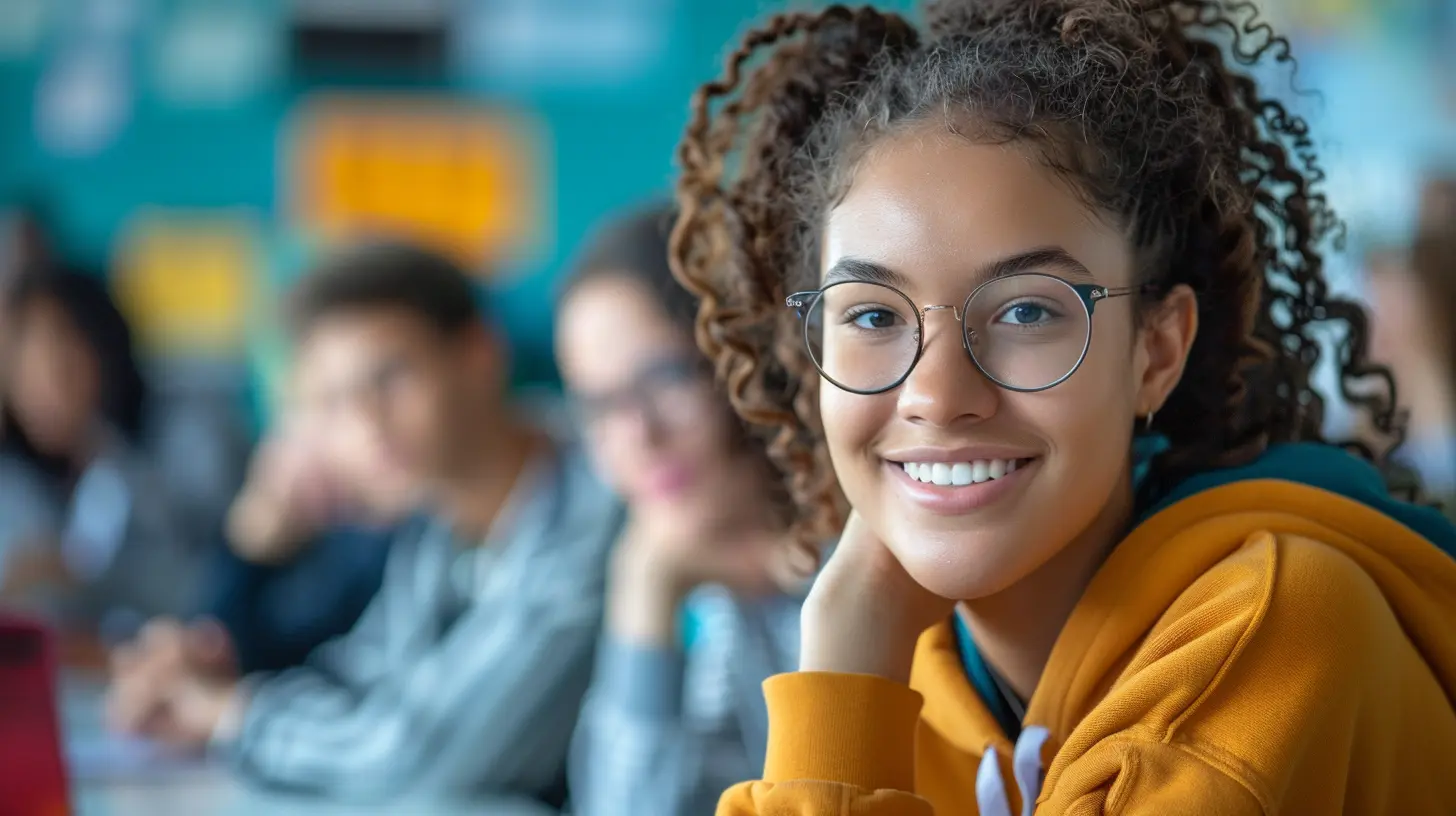Creative Strategies to Boost Student Engagement in the Classroom
22 October 2025
Student engagement is the secret sauce to a thriving classroom. When students are involved, curious, and eager to participate, learning becomes an exciting journey rather than just another obligation. But let’s be real—keeping students engaged can sometimes feel like trying to keep a balloon from touching the ground!
So, how do we capture their attention and make learning both fun and meaningful? In this article, we’ll explore creative strategies to boost student engagement in the classroom. Whether you're a teacher looking for fresh ideas or a parent seeking to support your child’s education, these strategies will help make learning an interactive adventure. 
Why Is Student Engagement Important?
Before we dive into strategies, let’s talk about why engagement matters. When students are actively involved in their learning:- They retain information better.
- They develop critical thinking and problem-solving skills.
- They become more motivated to learn.
- They participate more and take ownership of their education.
In contrast, disengaged students often struggle with concentration, motivation, and overall academic success. So, let’s look at some ways to turn the classroom into a place where students want to be! 
1. Make Learning Hands-On
One of the best ways to engage students is to involve them physically in their learning. Hands-on activities make lessons more immersive and encourage active participation.Ideas to Try
- Science experiments – Instead of just reading about chemical reactions, let students create their own experiments.- Interactive group projects – Have students build models, create posters, or design presentations together.
- Role-playing activities – History lessons come alive when students can act out historical events or debates.
When students can touch, create, or act out concepts, they’re more likely to remember them—and have fun in the process! 
2. Use Gamification
Who doesn’t love a little friendly competition? Gamification applies game-like elements to learning, making lessons more interactive and enjoyable. Turning a lesson into a challenge, a game, or a series of rewards can instantly boost engagement.Ways to Gamify Learning
- Classroom Quizzes – Apps like Kahoot! or Quizizz turn review sessions into exciting competitions.- Point Systems and Rewards – Give points for participation, teamwork, or completing assignments.
- Escape Room Challenges – Create puzzles that students must solve using the knowledge they’ve gained in a lesson.
By incorporating games, students feel a greater sense of accomplishment and are more eager to participate. 
3. Encourage Student Choice
Giving students some control over their learning makes them feel more invested. When they have the ability to choose, they feel a sense of ownership, making them more engaged.Ways to Offer Choice
- Flexible Assignments – Let students pick between writing an essay, creating a video, or designing a presentation.- Reading Choices – Allow students to select books that interest them rather than assigning a single book to everyone.
- Project-Based Learning – Give students freedom to explore topics they’re passionate about within the curriculum.
When students feel like they have a voice, they are more likely to stay engaged and motivated.
4. Incorporate Technology
Let’s face it—students today are digital natives. Integrating technology into the classroom can make learning feel more relevant to them.Tech Tools to Try
- Educational Apps – Apps like Duolingo, Google Earth, and BrainPOP make subjects come alive.- Virtual Field Trips – Take students on digital adventures to historical sites and museums around the world.
- Interactive Whiteboards – Let students illustrate concepts, solve problems, or collaborate on ideas in real time.
By tapping into the tech tools they already love, you can make learning more engaging and accessible.
5. Connect Lessons to Real Life
Students often ask, "When will I ever use this in real life?" If they can see the real-world relevance of their lessons, they’re far more likely to engage.How to Make Learning Practical
- Guest Speakers – Invite professionals to discuss how subjects like math or writing are used in their careers.- Real-Life Challenges – Have students apply concepts to real-world problems, such as budgeting, planning a trip, or designing a product.
- Community Projects – Connect classroom lessons to community service, like writing letters to local officials or designing a school garden.
When students see the bigger picture, they become more motivated to learn.
6. Foster Classroom Collaboration
Learning doesn’t have to be a solo journey. Encouraging teamwork and collaboration can make learning more enjoyable and meaningful.Ways to Build Collaboration
- Group Discussions – Let students talk through ideas and learn from each other’s perspectives.- Team Projects – Assign group work that requires cooperation and shared responsibility.
- Peer Teaching – Have students teach each other about a topic they’ve mastered.
When learning becomes a shared experience, it feels less like a task and more like an adventure.
7. Encourage Creative Expression
Not all students learn the same way. Allowing creativity in the classroom can help students express themselves in ways that resonate most with them.Creative Learning Approaches
- Art Integration – Let students draw, paint, or collage their understanding of a lesson.- Storytelling – Encourage students to write or act out their interpretations of concepts.
- Music and Movement – Use songs, raps, or dance to make learning more dynamic.
Creativity keeps learning fresh, exciting, and deeply personal.
8. Build Strong Relationships
A supportive and positive classroom environment makes all the difference. When students feel seen and valued, they’re more likely to engage.Ways to Strengthen Relationships
- Learn Names and Interests – Show that you value your students as individuals.- Celebrate Achievements – Recognize small wins and encourage progress.
- Create an Inclusive Atmosphere – Ensure every student feels confident to participate.
When students feel comfortable and connected, engagement naturally follows.
9. Make Space for Movement
Sitting still for long periods? That’s a surefire way to lose engagement. Incorporating movement helps maintain energy and focus.Active Learning Strategies
- Brain Breaks – Short physical exercises or stretches between lessons.- Station Rotations – Set up different learning stations to encourage movement.
- Walk & Talk Discussions – Take learning outside for a fresh perspective.
Keeping students active keeps their brains engaged, too!
10. Encourage Reflection and Feedback
Engagement isn’t just about keeping students entertained—it’s about helping them grow. Encouraging reflection and feedback makes learning more meaningful.Reflection Techniques
- Exit Tickets – Have students write one thing they learned or a question they still have.- Class Discussions – Allow open conversations about what’s working and what’s not.
- Personal Goal-Setting – Encourage students to set and track their learning goals.
By giving students a voice in their learning journey, you keep them engaged and invested.
Final Thoughts
Engaging students in the classroom doesn’t require expensive tools or elaborate plans—it just takes creativity and a willingness to connect with them on their level. Whether through hands-on activities, gamification, technology, or collaboration, there are countless ways to make learning exciting and meaningful.At the end of the day, the most important thing is to make students feel valued, curious, and inspired. When that happens, learning stops being a chore and becomes an adventure they want to be part of.
Let’s make the classroom a place where curiosity thrives and engagement soars!
all images in this post were generated using AI tools
Category:
Student EngagementAuthor:

Olivia Lewis
Discussion
rate this article
1 comments
Aelith McMillan
Innovative approaches can significantly enhance classroom engagement and learning.
October 22, 2025 at 3:55 AM


